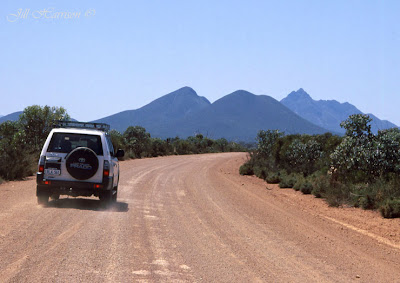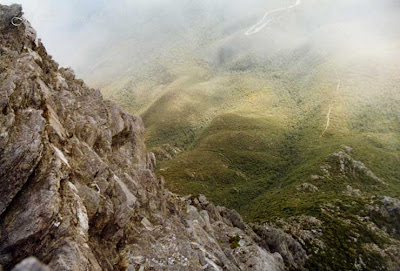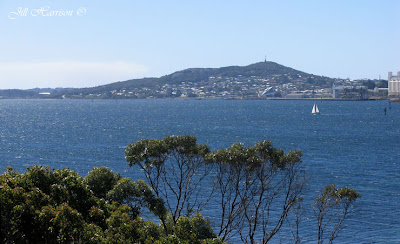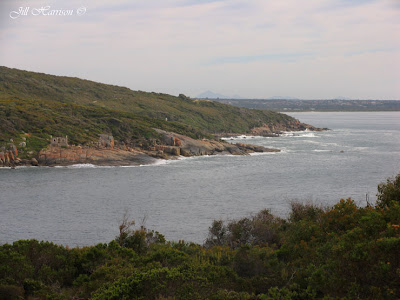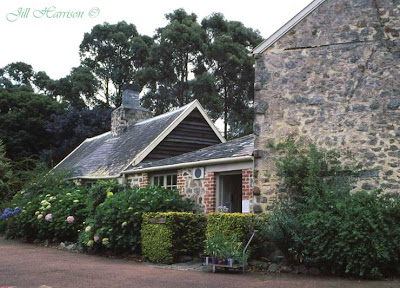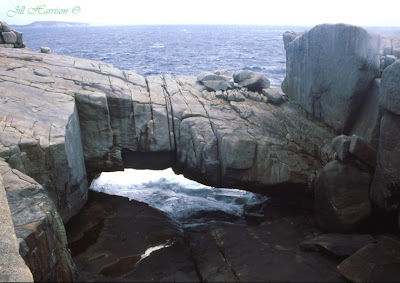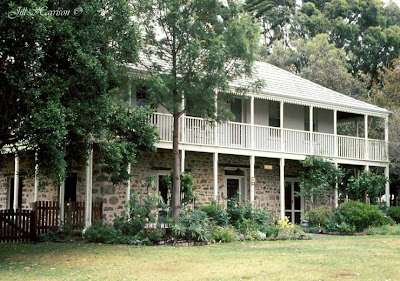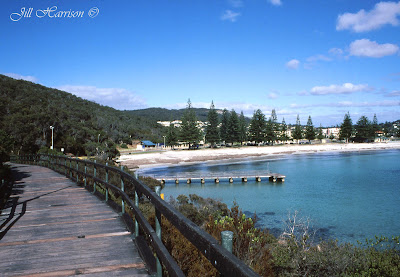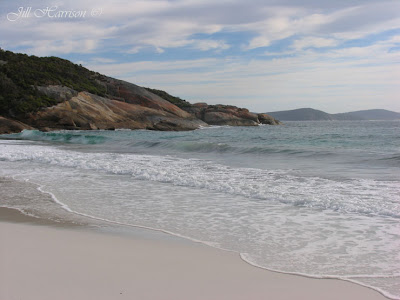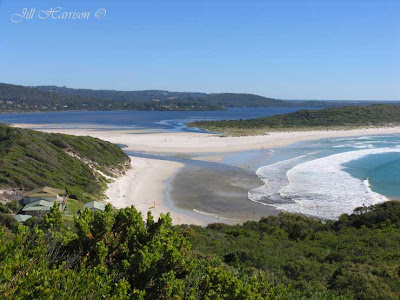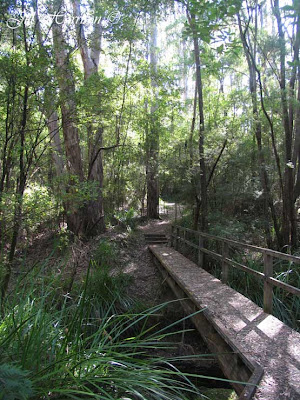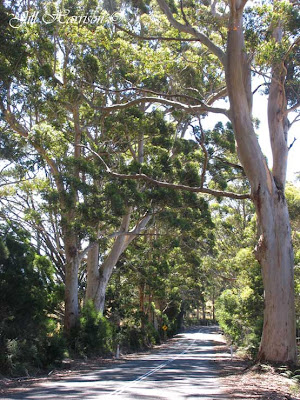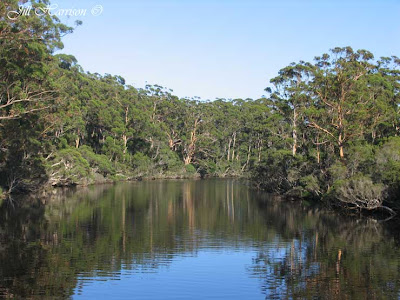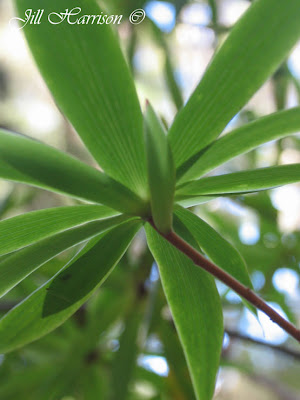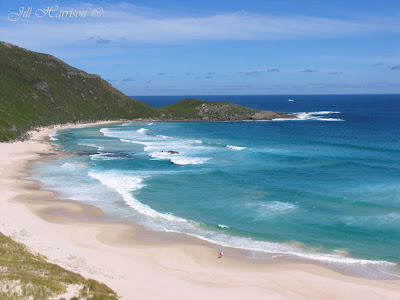The wheatbelt is a huge area of land extending north of Geraldton on the west coast to Esperance on the south coast and covering a great part of the south west of Western Australia. This is the land where farming predominately features around wheat and sheep.
Farming practices have changed a great deal from the early years of farming, and a drive through the wheatbelt reveals the history and pioneering spirit of the country and many treasurers for visitors and photographers. We will travel past paddocks of ripening heads of wheat and golden canola, along roads lined with salmon gums, mallee, sandalwood and quondong trees, visit quiet country churches and railway sidings, climb granite outcrops with stunning views, and see massive headers harvesting the wheat.
First stop is Arthur River - this is an old inn on the side of the road - where the Cobb & Co coaches used to stop over on their way south. I love photographing these old buildings. This one is built from local stone with wooden shingles on the roof.
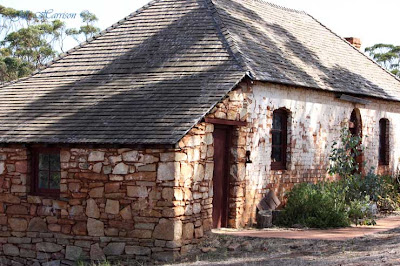 |
| From Life Images by Jill |
Then it is on to Narrogin, which is bigger than the average wheatbelt town being an important road and rail junction. First settled in the 1860’s by pastoralists, the key to the development of Narrogin was the arrival of the Great Southern Railway in 1889.
For those interested in heritage there are two heritage trails. The Old Courthouse Museum building was built in 1894 as a school, converted into a courthouse in 1905, became a bank between 1924-1945, resumed its status as a courthouse in 1970, and has been a museum since 1976 and contains a display of local memorabilia.
This is the Town Hall built in 1907 - it displays a sense of solidity and confidence in the town’s future and thriving rural community.
 |
| From Life Images by Jill |
22 kilometres north-west of Narrogin brings us to the 28,000 hectare Dryandra Woodland the largest remaining woodland area in the Wheatbelt. Dryandra offers visitors an excellent opportunity to observe a vast array of animals in their native environment at the Barna Mia Sanctuary, numerous picnic areas and walk trails to enjoy by foot, bicycle or horseback ranging in length from one to 27 kilometres, through picturesque open woodland ablaze with wildflowers in spring. You can camp at the Congelin Camp Ground or stay in self contained restored woodcutters’ cottages at the Lions Dryandra Woodland Village.
The trees are quite different in the wheatbelt to what you have seen in the South West corner. The land is dryer here so the plants have changed too. Here is a photo taken along the track through Dryandra.
 |
| From Life Images by Jill |
Here is a photo of the Western Grey Kangaroo with her joey in her pouch - We saw a number of these kangaroos when we were walking along one of the walk trails in Dryandra.
 |
| From Life Images by Jill |
The kangaroos actually let us get quite close if you walk up quietly and slowly, but keep your distance - say about 50 metres. I looked at the info on the kangaroo photo and I saw I had the camera at 51mm - so pretty close! I think in Dryandra the kangaroos are very used to people walking along the walk trails so they don't jump away as soon as they see you.
Here are another couple of members of our wildlife that I got really close to in Dryandra.
This is the Bobtail goanna - so called because he has a stubby tail. Come too close and he will hiss at you and stick out his tongue which this one did when he had had enough of me taking photos!
 |
| From Life Images by Jill |
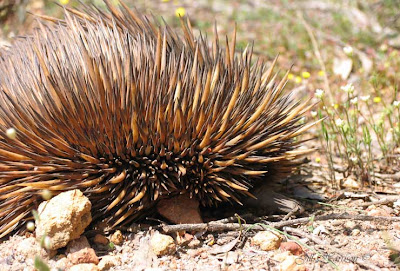 |
| From Life Images by Jill |
 |
| From Wildflowers |
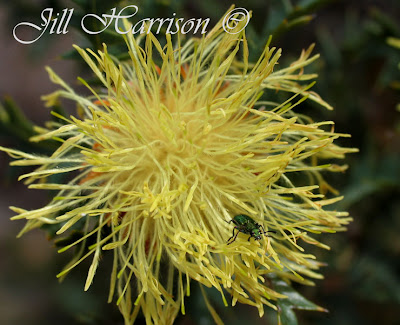 |
| From Wildflowers |
